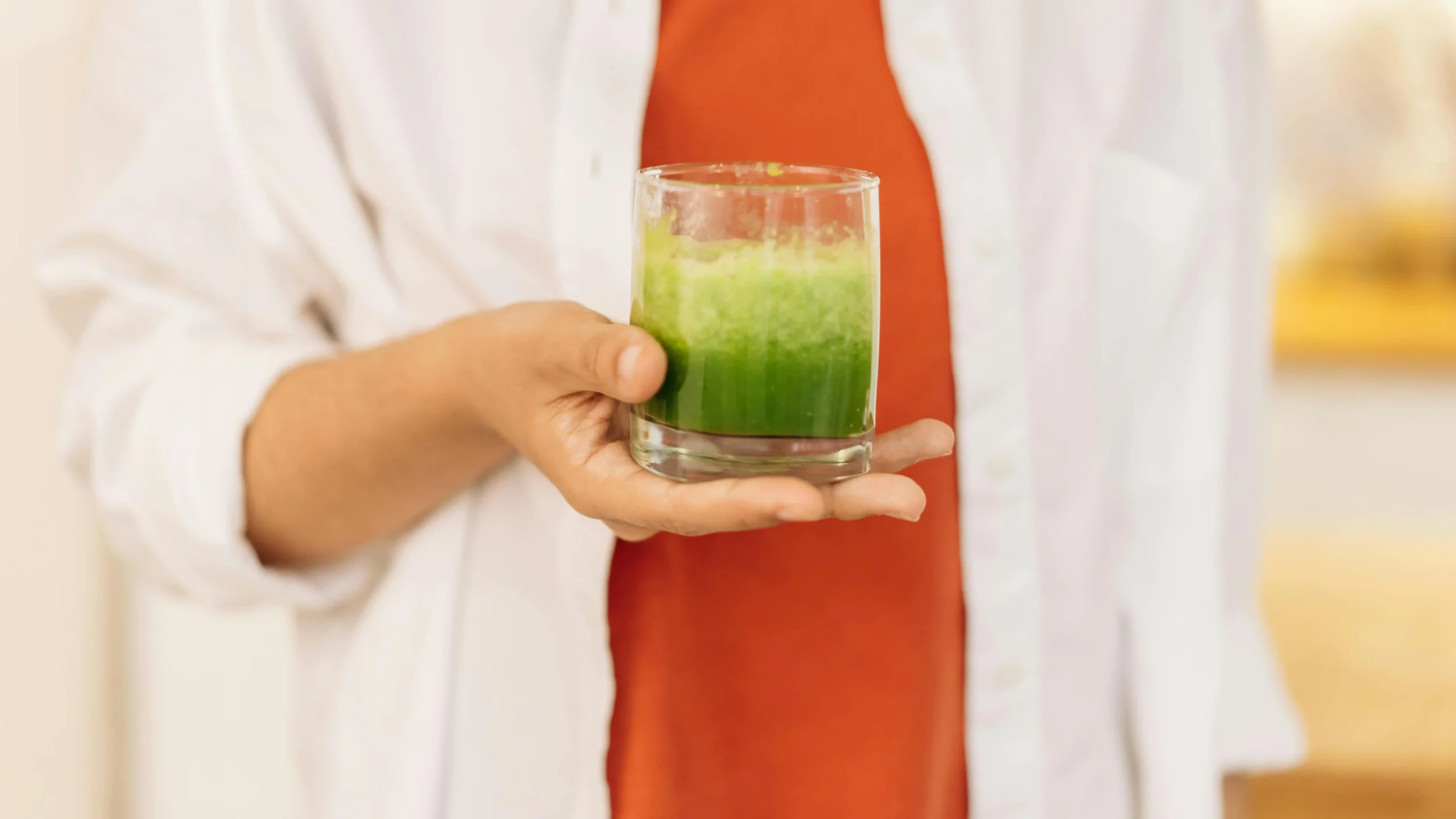Whey protein concentrate (WPC) is a protein supplement derived from the liquid part of milk during cheese production. It’s rich in essential amino acids and has a high protein content, making it ideal for muscle repair and growth. Featuring a unique balance of nutrients, it stands out as a versatile and effective option for enhancing your dietary intake. In this article, you’ll learn about its production process, nutritional profile, benefits, and how to incorporate it into your diet.
- What Is Whey Protein Concentrate?
- Nutritional Profile of Whey Protein Concentrate
- Benefits of Whey Protein Concentrate
- Whey Protein Concentrate vs. Whey Protein Isolate
- Potential Risks and Side Effects
- How to Choose Quality Whey Protein Concentrate
- Popular Uses of Whey Protein Concentrate
- How to Incorporate Whey Protein Concentrate Into Your Diet
- Conclusion
What Is Whey Protein Concentrate?
Whey protein concentrate (WPC) is a powerhouse supplement derived from the liquid whey that separates from milk during the cheese-making process. This separation process yields a substance rich in proteins and essential amino acids, making WPC an incredibly effective nutritional component. If you are committed to enhancing your nutrition and fitness, WPC could serve as an excellent asset.
Composition and Origin
To break it down, whey protein concentrate typically contains about 70-80% protein. The remaining composition includes carbohydrates, fats, and moisture, making it a well-rounded supplement that doesn’t skimp on the essentials. This protein comes from milk, which has undergone minimal processing compared to whey protein isolate. This translates into a product that retains most of the bioactive compounds naturally found in whey.
At [Peak Performance](https://peakperformance.institute), we emphasize the importance of these essential amino acids, particularly leucine, which plays a significant role in muscle protein synthesis. It’s a complete protein, meaning it provides all nine essential amino acids your body can’t produce on its own.
Why Choose Whey Protein Concentrate?
WPC is less processed than other forms of whey protein, such as whey protein isolate. This characteristic allows it to maintain more of the nutritional benefits inherent in whey. Because of this, you may find that WPC not only aids your muscle growth but also enhances your immune system and overall wellness. Its relatively lower cost also makes it an accessible option for a wide range of users.
Differentiation from Whey Protein Isolate
The concentration process differentiates WPC from other forms like whey protein isolate (WPI). While WPI goes through further processing to remove almost all the fats and carbohydrates, WPC retains a more balanced nutritional profile. This makes it a versatile supplement suitable for various dietary needs.
Nutritional Profile of Whey Protein Concentrate
The nutritional complexity of WPC is what makes it so effective. Unlike other protein supplements, WPC offers a more balanced intake of essential nutrients, providing you with much more than just protein.
Macronutrient Composition
- Protein: WPC typically contains around 70-80% protein. This high protein content helps in muscle recovery, repair, and growth, making it a favorite among athletes and fitness enthusiasts.
- Carbohydrates: You’ll also find a modest amount of carbohydrates, primarily in the form of lactose. This carbohydrate content can give an added energy boost, especially useful in pre- or post-workout scenarios.
- Fats: WPC includes a small percentage of fats. While this might concern some, these fats are essential for hormone production and overall cellular functions.
Key Proteins and Amino Acids
WPC is home to various types of proteins, including:
- Beta-Lactoglobulin: This is the most abundant protein in whey, making up about 50-55% of WPC. It is an essential source of branched-chain amino acids (BCAAs), which are crucial for muscle growth and recovery.
- Alpha-Lactalbumin: This protein comprises about 20-25% of WPC and is rich in essential amino acids, making it ideal for maintaining bodily functions and immune responses.
- Immunoglobulins and Lactoferrin: These proteins support your immune system and possess antimicrobial properties, further enhancing WPC’s health benefits.
Comparing to Other Protein Supplements
When you compare WPC to other protein supplements, its balanced macro and micronutrient profile stands out. Unlike casein or soy protein, whey protein concentrate provides a fast-absorbing protein source while still offering sustained benefits due to its complex composition. This makes WPC a highly versatile tool for anyone looking to improve their diet and fitness outcomes.
Benefits of Whey Protein Concentrate
Whether you’re a seasoned athlete or someone diving into the world of fitness, Whey Protein Concentrate offers an array of benefits that can meet your nutritional needs.
Muscle Building and Repair
One of the most recognized benefits of WPC is its role in muscle building and repair. The high protein content, coupled with essential amino acids like leucine, ensures that your muscles receive the necessary fuel for growth and recovery.
Weight Loss and Management
If weight loss is your goal, WPC can be an effective ally. Protein has a high thermic effect, meaning that your body burns more calories digesting it compared to fats and carbohydrates. Furthermore, protein can aid in satiety, making you feel fuller for longer and reducing overall calorie intake.
Immune Support
The immunoglobulins and lactoferrin present in WPC contribute to a stronger immune system. These components have antimicrobial properties that help fend off infections and keep your immune system robust.
Blood Sugar Control
Whey protein concentrate can also play a part in managing blood sugar levels. Studies indicate that consuming WPC can lead to moderate blood sugar levels after meals, which is beneficial for managing conditions like diabetes.
Cardiovascular Health
Some research suggests that the peptides in WPC can help reduce blood pressure, contributing to cardiovascular health. Incorporating WPC into your diet could be a step towards better heart health.
Whey Protein Concentrate vs. Whey Protein Isolate
Choosing between whey protein concentrate and whey protein isolate can be a bit tricky. Understanding the key differences can help you make an informed decision that aligns with your health and fitness goals.
Protein and Nutrient Content
- WPC: Contains 70-80% protein, with the remainder made up of fats, carbohydrates, and bioactive compounds. Ideal for those looking for a more balanced nutritional profile.
- WPI: Boasts over 90% protein content with minimal fats and carbs. Best suited for those needing a high-protein intake with fewer additional nutrients.
Lactose Content and Digestibility
- WPC: Contains more lactose than WPI, which might pose challenges for those with lactose intolerance. However, it retains more bioactive compounds beneficial for overall health.
- WPI: More suitable for those with lactose intolerance as it contains lower levels of lactose.
Cost and Accessibility
- WPC: Generally more affordable, making it accessible for a broader range of people.
- WPI: Usually comes with a higher price tag due to its extensive processing.
Use Case Scenarios
- WPC Conclusion: Ideal for those wanting a cost-effective, nutritionally balanced protein supplement to support muscle growth and overall health.
- WPI Conclusion: Perfect for athletes requiring rapid protein absorption, individuals following low-carb or low-fat diets, and those with lactose intolerance.
By considering these differences, you can select the whey protein product that best fits your lifestyle and nutritional needs.
Take the time to understand what suits you best, whether it’s the more balanced Whey Protein Concentrate or the purer Whey Protein Isolate.
Potential Risks and Side Effects
While whey protein concentrate (WPC) offers numerous benefits, it’s essential to be aware of potential risks and side effects. At Peak Performance, we prioritize offering well-rounded insights for our readers.
Lactose Intolerance and Digestive Issues
Many of the potential side effects of WPC stem from its lactose content. If you’re lactose intolerant, consuming WPC might lead to digestive discomfort, including:
- Bloating: The presence of lactose can cause gas and bloating.
- Stomach Pain: You might experience cramps and abdominal discomfort.
- Diarrhea: Increased bowel movements can occur due to dairy intolerance.
If you experience any of these symptoms, it might be beneficial to consider whey protein isolate or a non-dairy protein alternative.
Allergic Reactions
Since WPC is derived from milk, it can trigger allergic reactions in individuals with milk allergies. Symptoms can range from mild to severe, including:
- Rash: Skin reactions such as rashes or hives.
- Respiratory Issues: Sneezing, wheezing, or shortness of breath.
- Anaphylaxis: In severe cases, a potentially life-threatening condition requiring immediate medical attention.
Overconsumption Concerns
Moderation is key to incorporating any supplement into your diet. Overconsumption of WPC can lead to:
- Kidney Stress: High protein intake can strain kidneys, particularly in those with pre-existing kidney conditions.
- Nutrient Imbalance: Relying heavily on protein supplements may lead to insufficient intake of other essential nutrients.
Potential Drug Interactions
Some medications might interact with whey protein, affecting their efficacy. It’s important to consider how supplements integrate with your existing health regimen to avoid potential adverse effects.
How to Choose Quality Whey Protein Concentrate
Selecting a high-quality whey protein concentrate is crucial to reap its full benefits. Here are some tips to guide you:
Protein Purity and Ingredient List
- High Protein Content: Aim for products with at least 70-80% protein content.
- Minimal Additives: Look for products with fewer artificial sweeteners, fillers, and preservatives. An ingredient list with fewer items is generally preferable.
Brand Reputation
Choose products from reputable brands with positive reviews and a known commitment to quality. Transparent sourcing and manufacturing processes indicate a trustworthy product.
Third-Party Testing
Third-party certifications ensure that the product meets specific safety and quality standards. Look for certifications such as:
- NSF Certified for Sport: Ensures the supplement is free from banned substances.
- Informed-Sport: Indicates rigorous testing for impurities and contaminants.
Common Certifications
Certifications like USDA Organic or Non-GMO Project Verified can add an extra layer of assurance regarding the product’s quality and ethical sourcing.
Popular Uses of Whey Protein Concentrate
Whey protein concentrate is incredibly versatile, finding its way into a variety of foods and beverages. Here are some common applications:
Protein Shakes and Smoothies
One of the most popular uses of WPC is in protein shakes and smoothies. It’s easy to mix and blends well with fruit, vegetables, and other superfoods.
Baked Goods and Snacks
Incorporate WPC into baked goods like muffins, pancakes, and energy bars. This boosts their protein content without compromising on taste.
Fortifying Foods
Use WPC to enhance the nutritional profile of everyday foods. Mix it into oatmeal, yogurt, or even soups and sauces for an additional protein boost.
Pre- and Post-Workout Meals
WPC is ideal for pre- and post-workout nutrition. Its fast-absorbing nature helps to quickly replenish amino acids, aiding muscle recovery and growth.
How to Incorporate Whey Protein Concentrate Into Your Diet
Adding whey protein concentrate to your daily diet can be straightforward and enjoyable. Here are practical ways to include it:
For Beginners
- Starting Small: Begin with a small scoop (20-25 grams) to assess your tolerance.
- Protein Shakes: Mix with water, milk, or a non-dairy alternative for a simple shake.
- Morning Boost: Add to your morning smoothie with fruits and greens.
For Experienced Users
- Meal Replacement: Use as a base for meal-replacement shakes, adding healthy fats and fiber.
- Baked Goods: Substitute some flour with WPC in recipes for muffins, pancakes, and brownies.
- Savory Dishes: Stir into soups, sauces, and stews for added protein without altering flavor.
Simple and Delicious Recipes
Here are a few recipe ideas to get you started:
- Protein Pancakes: Combine WPC with oats, egg whites, and banana for a nutritious breakfast.
- Energy Bars: Mix WPC with nuts, seeds, dried fruits, and a natural sweetener like honey or dates.
- Protein Oatmeal: Stir a scoop of WPC into your cooked oatmeal, adding fruits and nuts for extra flavor and nutrients.
Incorporating WPC into your diet can be as simple or creative as you’d like. The key is to find a routine that works for you, ensuring you enjoy both the taste and the health benefits.
Conclusion
Whey protein concentrate is a versatile, effective supplement that can significantly enhance your nutrition and fitness journey. From muscle building to immune support, WPC offers a wide range of benefits. By understanding its production, nutritional profile, and how to incorporate it into your diet, you can tailor the use of WPC to meet your specific needs.



